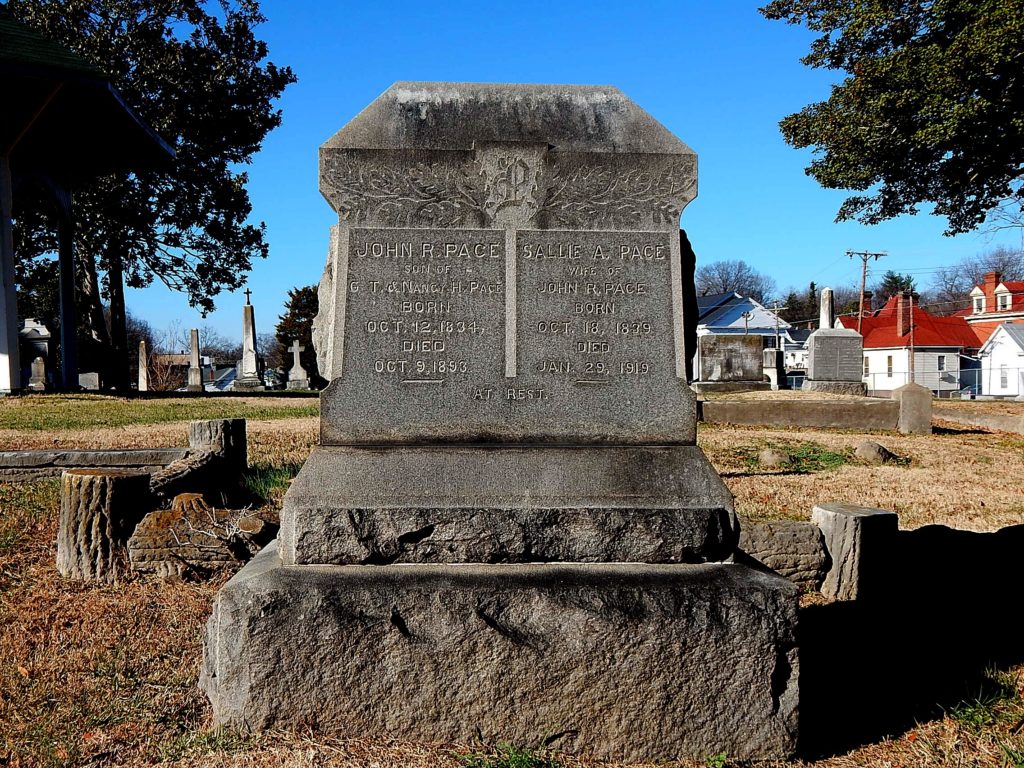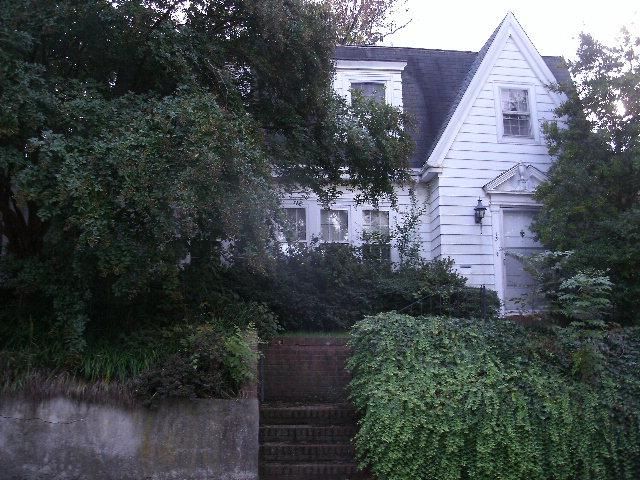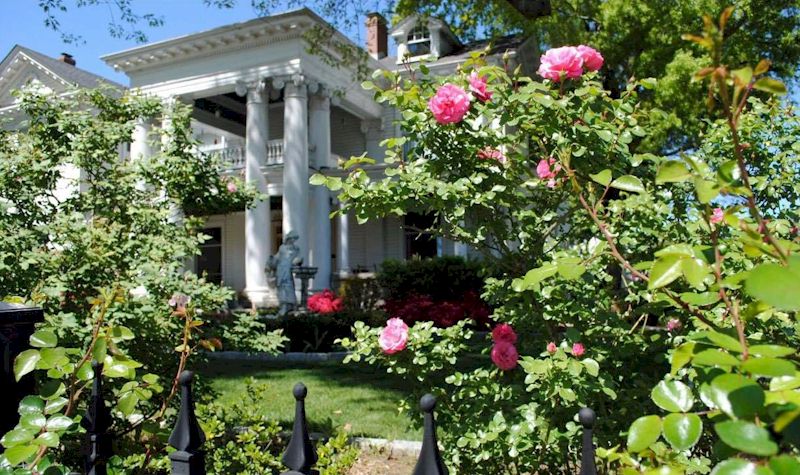Wealthy merchant E.J. Bell built his large and ostentatious Italianate style home in the oak grove on Salisbury Road in 1860 outside the city limits of Danville, a landmark and memorial to the wealth he had accumulated. Eight years later, however, Bell was facing bankruptcy and the home went up for auction. It was purchased on speculation by William J. Peake of New York who turned around and resold the home to John R. Pace.
 Mr. Pace was born in 1834 in Henry County and moved to Danville with his family in 1850. In 1855 he and his father together entered the tobacco business eventually establishing his own concern of J.R. Pace & Co. before entering into the partnership of Pace, Talbott & Co. At the time of his death in 1893, he was part of P.B. Gravely & Co., tobacco manufacturers. Mr. Pace, apart from his prominent role in the tobacco industry also served the community as member of the city council from 1877 until 1882 and then again in 1889 up to the time of his death. Mr. Pace was also a chairman of the board and dedicated member of Mount Vernon Methodist Episcopal Church. In the last years of his life, Mr. Pace suffered from lung ailments which eventually led to his death on October 10, 1893, just two days shy of his 59th birthday. Mr. Pace left behind a widow, Sallie, who outlived him by another twenty-six years, and six children, two of whom, James R. and William G., though adults (and both tobacconists in their own right), shared the Pace home.
Mr. Pace was born in 1834 in Henry County and moved to Danville with his family in 1850. In 1855 he and his father together entered the tobacco business eventually establishing his own concern of J.R. Pace & Co. before entering into the partnership of Pace, Talbott & Co. At the time of his death in 1893, he was part of P.B. Gravely & Co., tobacco manufacturers. Mr. Pace, apart from his prominent role in the tobacco industry also served the community as member of the city council from 1877 until 1882 and then again in 1889 up to the time of his death. Mr. Pace was also a chairman of the board and dedicated member of Mount Vernon Methodist Episcopal Church. In the last years of his life, Mr. Pace suffered from lung ailments which eventually led to his death on October 10, 1893, just two days shy of his 59th birthday. Mr. Pace left behind a widow, Sallie, who outlived him by another twenty-six years, and six children, two of whom, James R. and William G., though adults (and both tobacconists in their own right), shared the Pace home.
Mrs. Pace remained in the home at 904 Main Street until 1898 when she sold it to Herbert Lee Boatwright, who relocated from his much smaller home at 136 Chestnut Street with his wife and their six children. It was Mr. Boatwright who, in 1911, made the alterations to the home’s façade, including the addition of Palladian windows as well as that of a large portico supported on ionic columns. A large wing was also added onto the home, projecting forward from the façade and to the west, increasing the already spacious floorplan significantly.
 Mr. Boatwright, a native of Buckingham County, Virginia, came to Danville in 1865 when he was just three years old. At the age of twelve, his father, John Guerrant Boatwright, died suddenly, leaving he and his brothers to support the family, forcing all but the youngest brother, Joseph Overton, to quit school.
Mr. Boatwright, a native of Buckingham County, Virginia, came to Danville in 1865 when he was just three years old. At the age of twelve, his father, John Guerrant Boatwright, died suddenly, leaving he and his brothers to support the family, forcing all but the youngest brother, Joseph Overton, to quit school.
In the tobacco factory of George H. Hughes, H. Lee learned the tobacco trade from the ground up, eventually rising in ranks as he developed a discerning eye for spotting the high quality tobacco during a time when Danville was quickly earning a name for itself in the tobacco trade. (For more about H. Lee Boatwright, read a previous post.)
Lee and his wife Mary had six children, two of whom made illustrious marriages. Son, John Guerrant, married Mary Archer Glass, daughter of Senator Carter Glass. Lee Jr. married Suzanne Pollard, whose father was Governor John Garland Pollard.
 It was also during the Boatwright’s residence that the house at 13 Chestnut Place was built as a home for their son, John G. Boatwright, and which later became the residence of H. Lee’s brother Joseph Overton Boatwright. (See companion post.)
It was also during the Boatwright’s residence that the house at 13 Chestnut Place was built as a home for their son, John G. Boatwright, and which later became the residence of H. Lee’s brother Joseph Overton Boatwright. (See companion post.)
Herbert Lee Boatwright died of heart complications following a bout of influenza in January of 1935 and was survived by his wife, two brothers (William Penick and Joseph Overton) and his six children.
The home was maintained by the Boatwright family until 1967, when Lee and Mary’s daughter Alice Boatwright Williamson sold the home to Judge and Mrs. Archibald Murphy Aiken. Judge Aiken was judge of the Corporation Court of Danville from 1950 until his death in 1971. Mrs. Aiken remained in the home for another eight years.
The home is presently the residence of owners John and Ginger Holbrook. You can read their story here.
Sources include:
Danville Historical Society Holiday Tour Archives, 2011
Highland Recorder; Monterey, VA; “Death of Mr. John R. Pace”; 10 October 1893
The Bee, “H.L. Boatwright, Pioneer of Danville Leaf Mart Dies” 23 Jan 1935
If Streets Could Talk, Lee Wayland, pg. 61
</small
